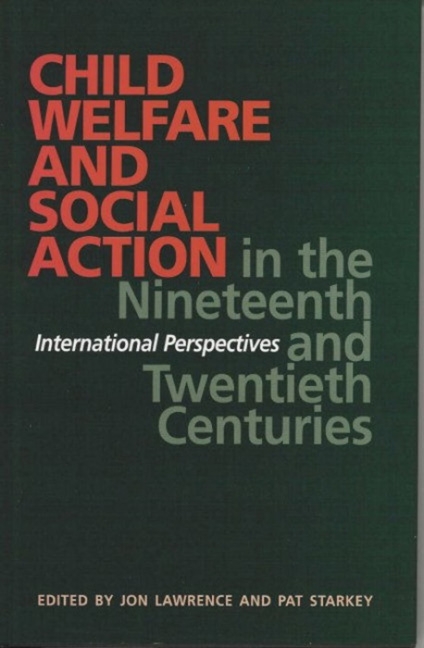Book contents
- Frontmatter
- Contents
- Acknowledgements
- Introduction: Child Welfare and Social Action
- I Gender and ‘Delinquency’
- II Child Emigration
- III Rethinking Philanthropy
- 7 From Barrack Schools to Family Cottages: Creating Domestic Space for Late Victorian Poor Children
- 8 The Campaign for School Meals in Edwardian Scotland
- 9 ‘Blood is Thicker than Water’: Family, Fantasy and Identity in the Lives of Scottish Foster Children
- IV ‘Welfare States’ and Child Welfare
- Notes on Contributors
- Index
7 - From Barrack Schools to Family Cottages: Creating Domestic Space for Late Victorian Poor Children
from III - Rethinking Philanthropy
- Frontmatter
- Contents
- Acknowledgements
- Introduction: Child Welfare and Social Action
- I Gender and ‘Delinquency’
- II Child Emigration
- III Rethinking Philanthropy
- 7 From Barrack Schools to Family Cottages: Creating Domestic Space for Late Victorian Poor Children
- 8 The Campaign for School Meals in Edwardian Scotland
- 9 ‘Blood is Thicker than Water’: Family, Fantasy and Identity in the Lives of Scottish Foster Children
- IV ‘Welfare States’ and Child Welfare
- Notes on Contributors
- Index
Summary
‘The family system is the foundation of everything that is valued in our institutions. Our whole structure of society rests on it. Any attempt to rear children artificially on a wholesale principle, is necessarily defective, will prove abortive, and be attended, one way or another, with bad effects.’ So declared the journalist William Chambers (1800–1883) in his opening article for the 9 June 1877 issue of Chambers's Journal. His comments heralded a great change in public opinion about how government and philanthropic organisations should treat the children in their care. Chambers condemned the grouping of orphaned, deserted and pauper children in large residential institutions as artificial, and urged England to follow Scotland's more family-based programme of boarding out, or placing children with foster parents. Boarding out gained support in England during the 1870s and 1880s, but it nonetheless remained a limited solution, eventually used more by philanthropic societies than the state. In England, the emphasis on family in state and philanthropic programmes for children took a different form. Institutions organised into ‘family cottages’ – each containing approximately 20 to 40 children who were cared for by foster ‘mothers’ and sometimes ‘fathers’ – became popular options instead. The cottages were arranged in model villages, such as the Girls’ Village Home in Ilford, founded in 1876 by the child philanthropist Dr Thomas Barnardo (1845–1905), and the Kensington and Chelsea Poor Law District School at Banstead, opened in 1880. These family-based institutions quickly became the prevailing ideal for state Poor Law and philanthropic children's institutions in England, replacing in public favour the workhouse and large block-style residential schools, labelled ‘barrack’ schools by many for their militaristic structure. As Chambers hoped, the family system had become a model for teaching children social and political values. What was often overlooked, however, was that the cottage homes were not necessarily less artificially constructed than the barrack schools; the version of the family that they promoted was indeed a peculiar one.
This chapter examines the transformation from barrack schools to family cottages by focusing on the role that middle-class conceptions of the family, domesticity and domestic space played in late Victorian debates concerning institutions for poor children.
- Type
- Chapter
- Information
- Publisher: Liverpool University PressPrint publication year: 2001



